 Apple cider vinegar has long been touted as a natural health remedy. It can aid digestion, help control blood sugar levels, alleviate sunburns, make hair shinier, and maybe even play a role in weight loss!
Apple cider vinegar has long been touted as a natural health remedy. It can aid digestion, help control blood sugar levels, alleviate sunburns, make hair shinier, and maybe even play a role in weight loss!
Another claim about the benefits of using apple cider vinegar is that it can act as a natural tooth whitener. Is the miracle cure apple cider vinegar really a whitening agent and, if so, how safe is it to use at home?
What is Apple Cider Vinegar?
Vinegar is a sour liquid made during a fermentation process that converts sugar to alcohols and then the alcohol into acetic acid. Apple cider vinegar, which has about 5% acidity, comes from apples and plain water. It’s used for marinades, salad dressings, pickling, and a wide variety of home remedies, including teeth whitening.
The acetic acid in apple cider vinegar has been reported to help remove plaque from teeth and remedy stains caused by smoking or drinking red wine or coffee. Apple cider vinegar is also touted for improving overall mouth health by killing “bad” bacteria and fostering healthy bacteria.
Nearly everyone wants brilliant white movie star teeth, and apple cider vinegar could be an easy, accessible way to get a little closer to that goal. Instead of making expensive, time-consuming teeth whitening products or in-office appointments, just reach in the pantry!
Mixed with water and used as a rinse or mouthwash, or combined with baking soda and rubbed directly onto the teeth as a paste, apple cider vinegar is getting recognition as an all-natural alternative to traditional whitening mouthwashes and toothpaste. But is it as great as some people say?
Potential Risks of Vinegar as a Whitening Agent
As with any “cure-all” treatment, there’s a catch. Apple cider vinegar is very acidic, with a pH of 3.075, and using too much can damage the tooth enamel, which starts to erode at a pH of 5.5.
Enamel erosion will actually make the tooth surfaces appear darker as the shiny white outer layer breaks down. When the protective outer enamel becomes weakened from too much acidity, it can lead to tooth sensitivity.
Although sometimes ingested to help ward off minor illnesses like colds and sore throats, swallowing undiluted apple cider vinegar can also cause throat irritation.
The Best Way to Use Apple Cider Vinegar to Whiten Teeth
To safely use apple cider vinegar as an organic, all-natural tooth-whitening agent, the key is to dilute and use sparingly. Create a rinse of one part apple cider vinegar and two parts water, and gently swish around the mouth for about one minute.
To avoid damaging the enamel, be sure to dilute the vinegar before it comes in contact with the teeth. After rinsing, wait at least 30 minutes before brushing teeth. Even diluted, the vinegar can be abrasive, and applying a rough toothbrush to the tooth’s enamel surfaces right away can do more harm than good.
Apple cider vinegar as a whitening rinse won’t lead to immediately brighter, whiter teeth. Consistent use over time – making sure to dilute to avoid enamel erosion – can eventually lead to a whiter smile. Always be sure to consult a dentist first to make sure it’s the best choice. Often, manufactured mouthwashes and toothpaste can deliver visible results more quickly without the risks, although they typically are not all-natural products.
With careful use, apple cider vinegar may be a smart option for organic tooth whitening. As with any product, natural or manufactured, consult a health professional before use and use in moderation for the greatest benefit with minimal risk.
Want another option for whiter teeth? Water Tower Dental Care offers Zoom! Teeth Whitening. Zoom! is a leading teeth whitening system that brightens smiles up to eight shades in about an hour. For more information on Zoom! or other tips for a healthier, whiter smile, Contact us to learn more.
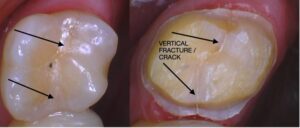
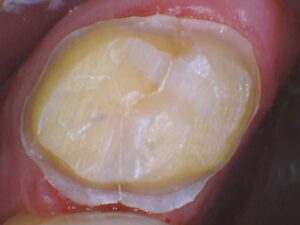
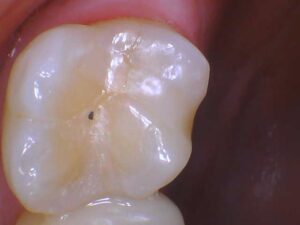










 Apple cider vinegar has long been touted as a natural health remedy. It can aid digestion, help control blood sugar levels, alleviate sunburns, make hair shinier, and maybe even play a role in weight loss!
Apple cider vinegar has long been touted as a natural health remedy. It can aid digestion, help control blood sugar levels, alleviate sunburns, make hair shinier, and maybe even play a role in weight loss! For the most gorgeous teeth in Chicago – or anywhere –
For the most gorgeous teeth in Chicago – or anywhere –  There are many ways to brush teeth, but some are much more effective than others. Using a Sonicare Electric Toothbrush, the number one brand recommended by dental professionals, delivers a superior clean for a healthier mouth. For optimal results, even this advanced toothbrush needs to be used properly.
There are many ways to brush teeth, but some are much more effective than others. Using a Sonicare Electric Toothbrush, the number one brand recommended by dental professionals, delivers a superior clean for a healthier mouth. For optimal results, even this advanced toothbrush needs to be used properly. If you’re a fan of DIY dental care, you’ve probably heard of using baking soda to clean and whiten your teeth. Before you take on any DIY healthcare you read about online, it’s important to do your research. Using baking soda too regularly could cause irreversible damage to your enamel. However, that doesn’t mean you should never use baking soda on your teeth. Let’s explore if baking soda is actually good for your teeth now.
If you’re a fan of DIY dental care, you’ve probably heard of using baking soda to clean and whiten your teeth. Before you take on any DIY healthcare you read about online, it’s important to do your research. Using baking soda too regularly could cause irreversible damage to your enamel. However, that doesn’t mean you should never use baking soda on your teeth. Let’s explore if baking soda is actually good for your teeth now. Receding gums happen when the gum tissue that surrounds the lower ends of the teeth begin to wear away and pull back, thus exposing the tooth and possibly its root. Gaps between the teeth, also known as pockets, form, allowing bacteria to nestle inside the available space causing more harm, including inflammation, gum disease, and tooth loss. To help prevent your gums from receding, it helps to know what causes receding gums, and ultimately, how to prevent it.
Receding gums happen when the gum tissue that surrounds the lower ends of the teeth begin to wear away and pull back, thus exposing the tooth and possibly its root. Gaps between the teeth, also known as pockets, form, allowing bacteria to nestle inside the available space causing more harm, including inflammation, gum disease, and tooth loss. To help prevent your gums from receding, it helps to know what causes receding gums, and ultimately, how to prevent it.
 When it comes to choosing a toothbrush, you definitely have some options. A pharmacy often dedicates a whole aisle to toothbrushes, giving you a long list of choices. One of the hardest decisions when choosing a toothbrush can be between a manual toothbrush and an electric toothbrush. Many question between a manual and an electric toothbrush, which is better? However, the answer isn’t necessarily which is better, but which is right for you. Though electric toothbrushes technically clean your teeth more effectively, they may not be right for everyone.
When it comes to choosing a toothbrush, you definitely have some options. A pharmacy often dedicates a whole aisle to toothbrushes, giving you a long list of choices. One of the hardest decisions when choosing a toothbrush can be between a manual toothbrush and an electric toothbrush. Many question between a manual and an electric toothbrush, which is better? However, the answer isn’t necessarily which is better, but which is right for you. Though electric toothbrushes technically clean your teeth more effectively, they may not be right for everyone.



 Probiotics have grown in popularity over the last few years. First, as a helpful ingredient for digestive health, now they are showing promising attributes to your oral health. From new mouthwashes and gums, probiotics are being focused and improved to help prevent cavities and bad breath, along with keeping gingivitis at bay.
Probiotics have grown in popularity over the last few years. First, as a helpful ingredient for digestive health, now they are showing promising attributes to your oral health. From new mouthwashes and gums, probiotics are being focused and improved to help prevent cavities and bad breath, along with keeping gingivitis at bay. Did you know that when you smile while talking on the phone, the person on the other end can tell and will respond positively? It’s true. It seems wild that someone might be able to tell if you’re smiling over the phone, but is it really that far-fetched? Think of how many times you’ve answered the phone in a bad or angry mood. The other person on the other end will almost immediately ask you what’s wrong. So why wouldn’t they be able to tell when you’re in a good mood?
Did you know that when you smile while talking on the phone, the person on the other end can tell and will respond positively? It’s true. It seems wild that someone might be able to tell if you’re smiling over the phone, but is it really that far-fetched? Think of how many times you’ve answered the phone in a bad or angry mood. The other person on the other end will almost immediately ask you what’s wrong. So why wouldn’t they be able to tell when you’re in a good mood? Painful and intrusive, the canker sore is a annoyance that no person ever wants. Between the ages of 10 and 20, you have a high probability you’ll get a few canker sores a year that will last up to a week at a time. For adults, complex canker sores are always a possibility, though more rare. So what are canker sores, why do we get them, how do we find ourselves some relief?
Painful and intrusive, the canker sore is a annoyance that no person ever wants. Between the ages of 10 and 20, you have a high probability you’ll get a few canker sores a year that will last up to a week at a time. For adults, complex canker sores are always a possibility, though more rare. So what are canker sores, why do we get them, how do we find ourselves some relief? Sometimes we find home remedies and new tricks to cleaning your teeth incredibly interesting, and potentially helpful. Oil pulling has been around for thousands of years, yet has only sparked the attention of many of our patients just recently. So what exactly is oil pulling and can it help keep your teeth is top health?
Sometimes we find home remedies and new tricks to cleaning your teeth incredibly interesting, and potentially helpful. Oil pulling has been around for thousands of years, yet has only sparked the attention of many of our patients just recently. So what exactly is oil pulling and can it help keep your teeth is top health?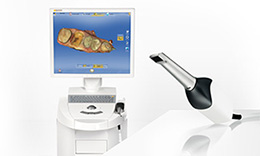 Water Tower Dental is committed to staying at the forefront of technological advancements in the field of dentistry. One of the most exciting advancements in the last few years has been the introduction and updates of the CEREC, a software innovation that allows dentists to digitally design all-ceramic crowns and porcelain veneers in just one visit.
Water Tower Dental is committed to staying at the forefront of technological advancements in the field of dentistry. One of the most exciting advancements in the last few years has been the introduction and updates of the CEREC, a software innovation that allows dentists to digitally design all-ceramic crowns and porcelain veneers in just one visit.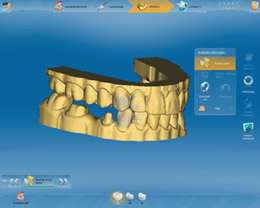 The beginning of the crown process is the same. First, your dentist will shave down your tooth to prepare it for a crown. However, rather than a wax mold, your dentist is able to use the CEREC scanner to make a 3D image of your tooth and the surrounding area. The image is uploaded to a design unit with uses CAD/CAM software to create a 3D model of the new crown.
The beginning of the crown process is the same. First, your dentist will shave down your tooth to prepare it for a crown. However, rather than a wax mold, your dentist is able to use the CEREC scanner to make a 3D image of your tooth and the surrounding area. The image is uploaded to a design unit with uses CAD/CAM software to create a 3D model of the new crown.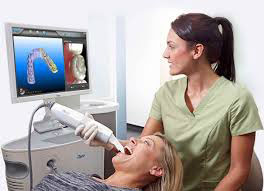 Dentistry has never been at a more exciting time when it comes to the rise of technology to help service the needs of the patient. One of the best technological developments is the iTero digital scanner. How does an iTero work, and how can it help you?
Dentistry has never been at a more exciting time when it comes to the rise of technology to help service the needs of the patient. One of the best technological developments is the iTero digital scanner. How does an iTero work, and how can it help you?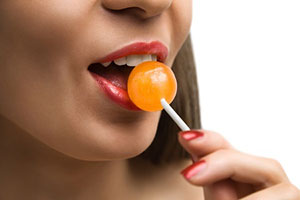 We’ve all been taught since a very young age that candy is the ultimate destroyer against teeth. However, new candies developed by scientists are turning that old story around. Now, there are several new candies (along with some older) that have beneficial attributes.
We’ve all been taught since a very young age that candy is the ultimate destroyer against teeth. However, new candies developed by scientists are turning that old story around. Now, there are several new candies (along with some older) that have beneficial attributes.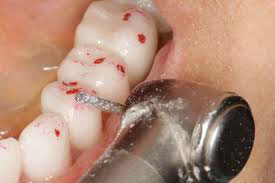 If you are experiencing, headaches, ear problems, clicking or grating jaw, mouth discomfort, and looseness of teeth, or any combination of these symptoms, you may be having an issue with your TMJ. If that’s the case, your dentist might recommend occlusal adjustments. What are occlusal adjustments? It is a method to reshape the surface of your teeth to create an even and harmonious relationship between the top and bottom teeth. To understand why this needs to happen though, we must dig a little deeper.
If you are experiencing, headaches, ear problems, clicking or grating jaw, mouth discomfort, and looseness of teeth, or any combination of these symptoms, you may be having an issue with your TMJ. If that’s the case, your dentist might recommend occlusal adjustments. What are occlusal adjustments? It is a method to reshape the surface of your teeth to create an even and harmonious relationship between the top and bottom teeth. To understand why this needs to happen though, we must dig a little deeper.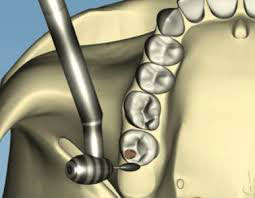 While shaving down teeth can seem like an easy option, it’s an irreversible procedure, and if the adjustments aren’t made properly, you could find yourself in a troubling situation. At Water Tower Dental, we offer non-damaging therapy options that can help fix the TMD condition. Using a Transcutaneous Electrical Neural Stimulation, or TENS, unit, we are able to asses any neuromuscular problems. While many doctors focus on the misplacement of the jaw, scientific developments have revealed that some problems associated with teeth, mouth, and jaws are actually caused by improper functions of the muscles and nerves. Using the TENS unit, we are able to find ideal positioning of the jaw.
While shaving down teeth can seem like an easy option, it’s an irreversible procedure, and if the adjustments aren’t made properly, you could find yourself in a troubling situation. At Water Tower Dental, we offer non-damaging therapy options that can help fix the TMD condition. Using a Transcutaneous Electrical Neural Stimulation, or TENS, unit, we are able to asses any neuromuscular problems. While many doctors focus on the misplacement of the jaw, scientific developments have revealed that some problems associated with teeth, mouth, and jaws are actually caused by improper functions of the muscles and nerves. Using the TENS unit, we are able to find ideal positioning of the jaw.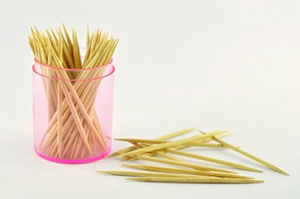 Toothpicks have been one of the most widely used tools for hygiene in the world. These simple pieces of carved wood help us free those annoying food particles stuck between our teeth after a rousing meal. But are toothpicks good for your teeth? Doesn’t the act of poking and prodding at your teeth and gums seem slightly wrong? If you have that inclination, it’s because you’re right. While toothpicks can be a helpful tool, overuse can be harmful and should call alarm to a bigger concern.
Toothpicks have been one of the most widely used tools for hygiene in the world. These simple pieces of carved wood help us free those annoying food particles stuck between our teeth after a rousing meal. But are toothpicks good for your teeth? Doesn’t the act of poking and prodding at your teeth and gums seem slightly wrong? If you have that inclination, it’s because you’re right. While toothpicks can be a helpful tool, overuse can be harmful and should call alarm to a bigger concern.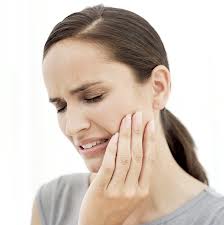 Clenching and grinding your teeth is a harmful and unhealthy habit to form. Unfortunately most people don’t even know they do it. Most teeth grinders do so in their sleep so they have no idea it’s happening. The result of clenching and grinding can cause serious damage to your teeth along with other symptoms. We’d like to show you how to stop grinding your teeth.
Clenching and grinding your teeth is a harmful and unhealthy habit to form. Unfortunately most people don’t even know they do it. Most teeth grinders do so in their sleep so they have no idea it’s happening. The result of clenching and grinding can cause serious damage to your teeth along with other symptoms. We’d like to show you how to stop grinding your teeth.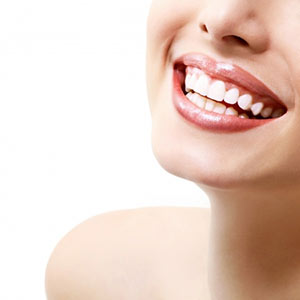 While listing out your New Years resolutions this time around, consider adding a few resolutions for your health, and specifically, your mouth. Keeping your teeth, gums, and tongue in good shape can help you in the years to come. Practicing good oral hygiene will help you look and feel good, along with allow you to avoid major dental surgeries and complications in the future. Here are 5 tips you can easily make into New Years resolutions for a better, healthier smile.
While listing out your New Years resolutions this time around, consider adding a few resolutions for your health, and specifically, your mouth. Keeping your teeth, gums, and tongue in good shape can help you in the years to come. Practicing good oral hygiene will help you look and feel good, along with allow you to avoid major dental surgeries and complications in the future. Here are 5 tips you can easily make into New Years resolutions for a better, healthier smile.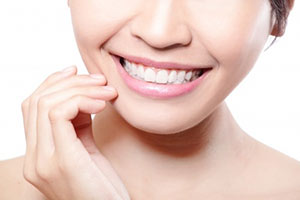 Of course it’s no question that the smartest practices for healthy teeth are brushing and flossing everyday. However, there are several more tips that can help you keep your teeth and gums healthy, and breath fresh. Today we’d like to discuss a few more smart practices for healthier teeth.
Of course it’s no question that the smartest practices for healthy teeth are brushing and flossing everyday. However, there are several more tips that can help you keep your teeth and gums healthy, and breath fresh. Today we’d like to discuss a few more smart practices for healthier teeth.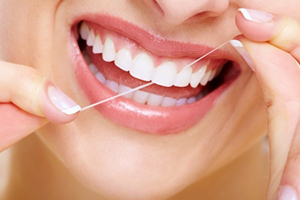 An interesting question that arises in our office from time to time from concerned patients is if they can potentially floss too much and cause damage to their teeth. Flossing is one of the most important oral hygiene practices a person should perform. It helps clear out plaque and bacteria build up between the teeth and gums that a normal toothbrush cannot reach. It may be surprising to read that you can, in fact, floss too much. However, we encourage you to read further to understand exactly what that means.
An interesting question that arises in our office from time to time from concerned patients is if they can potentially floss too much and cause damage to their teeth. Flossing is one of the most important oral hygiene practices a person should perform. It helps clear out plaque and bacteria build up between the teeth and gums that a normal toothbrush cannot reach. It may be surprising to read that you can, in fact, floss too much. However, we encourage you to read further to understand exactly what that means.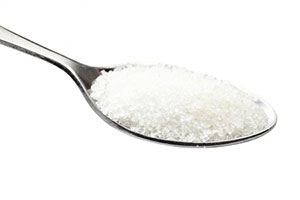 We’ve all been taught from a very young age about the dangers of sugar. We’re told to avoid candy, and to eat your vegetables. And while that is good advice, it misses the point. Sugar is one of the easiest fermentable substances available, and found in hundreds of foods, not just candy, so why the stigma? Well, it’s not so much the sugar that’s bad for your teeth; it’s the bacteria that love the sugar just as much as you.
We’ve all been taught from a very young age about the dangers of sugar. We’re told to avoid candy, and to eat your vegetables. And while that is good advice, it misses the point. Sugar is one of the easiest fermentable substances available, and found in hundreds of foods, not just candy, so why the stigma? Well, it’s not so much the sugar that’s bad for your teeth; it’s the bacteria that love the sugar just as much as you.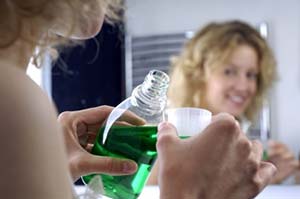 Mouthwash is an essential key to proper oral hygiene. However, many Americans misuse the product, either by using too much, too little, or often not using it for the right amount of time. To ensure that you’re using the proper mouthwash practices, we would like to offer you this simple guide to using mouthwash.
Mouthwash is an essential key to proper oral hygiene. However, many Americans misuse the product, either by using too much, too little, or often not using it for the right amount of time. To ensure that you’re using the proper mouthwash practices, we would like to offer you this simple guide to using mouthwash.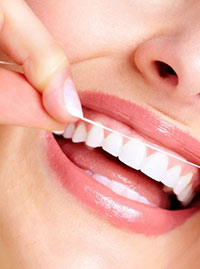 Over half of American adults have had or currently suffer from periodontal disease, also known as gum disease. There are many ways, however, that you can rebuild your gums including proper oral care and eating the right kinds of foods.
Over half of American adults have had or currently suffer from periodontal disease, also known as gum disease. There are many ways, however, that you can rebuild your gums including proper oral care and eating the right kinds of foods.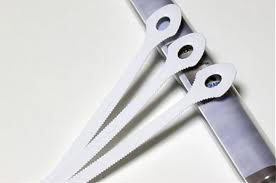 When it comes to oral hygiene, Water Tower Dental encourages daily brushing and flossing along with biannual dental cleanings and check ups. Clearing harmful bacteria out of the mouth will help keep your teeth and gums clean and healthy, but what about your breath? Although brushing a flossing can help keep the bacteria that cause bad breath away from your teeth and gums, there's still a chance you'll have bad breath. That's because many of the bacteria can camp out on your tongue. Cue the tongue scraper, a leading tool in keeping harmful bacteria off your tongue.
When it comes to oral hygiene, Water Tower Dental encourages daily brushing and flossing along with biannual dental cleanings and check ups. Clearing harmful bacteria out of the mouth will help keep your teeth and gums clean and healthy, but what about your breath? Although brushing a flossing can help keep the bacteria that cause bad breath away from your teeth and gums, there's still a chance you'll have bad breath. That's because many of the bacteria can camp out on your tongue. Cue the tongue scraper, a leading tool in keeping harmful bacteria off your tongue.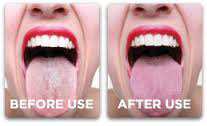 There are several different designs of a tongue scraper (also referred to as a tongue brush or tongue cleaner), but their objective is still the same. Tongue cleaners- unlike toothbrushes- are designed for the purpose of lifting and trapping the plaque coating and removing it from the tongue.
There are several different designs of a tongue scraper (also referred to as a tongue brush or tongue cleaner), but their objective is still the same. Tongue cleaners- unlike toothbrushes- are designed for the purpose of lifting and trapping the plaque coating and removing it from the tongue.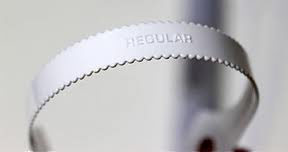 A tongue scraper will not just help your bad breath though. A tongue scraper helps remove ama from the tongue. Ama is sanskrit meaning anything that is undigested. Specifically for your mouth, undigested food. Old remnants of food, just like plaque, can build up along the tongue. The more build up you have, however, the less your taste buds can detect flavors of food. By using a tongue scraper, you can actually help your tongue taste food better. That's a great plus for anyone who loves a good meal.
A tongue scraper will not just help your bad breath though. A tongue scraper helps remove ama from the tongue. Ama is sanskrit meaning anything that is undigested. Specifically for your mouth, undigested food. Old remnants of food, just like plaque, can build up along the tongue. The more build up you have, however, the less your taste buds can detect flavors of food. By using a tongue scraper, you can actually help your tongue taste food better. That's a great plus for anyone who loves a good meal. Last week we listed the solutions for fixing a chipped tooth. Today we'd like to get a little more in depth on some of the harmful foods and activities that can crack, chip, or fracture a tooth.
Last week we listed the solutions for fixing a chipped tooth. Today we'd like to get a little more in depth on some of the harmful foods and activities that can crack, chip, or fracture a tooth.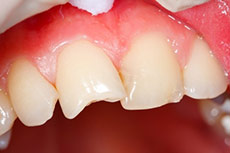 Whether you took a bite into something too hard for your tooth, or took a nasty spill, the potential to crack, fracture or chip your tooth is possible. Thankfully, there are several ways to fix a chipped tooth depending on the severity of the accident.
Whether you took a bite into something too hard for your tooth, or took a nasty spill, the potential to crack, fracture or chip your tooth is possible. Thankfully, there are several ways to fix a chipped tooth depending on the severity of the accident.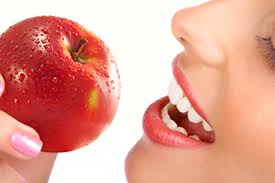 There are a lot of conflicting opinions if apples are good for your teeth or not. Seems odd that it’s even a question. How could the fruit recommended to keep the doctor away hurt you? A few years back, the Toronto Star published some negative
There are a lot of conflicting opinions if apples are good for your teeth or not. Seems odd that it’s even a question. How could the fruit recommended to keep the doctor away hurt you? A few years back, the Toronto Star published some negative 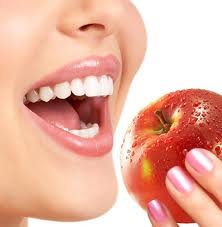 However, though apples can hurt your teeth, their benefits greatly outweigh the risk. Not only can apples help our teeth, they can help regulate our blood sugar, are low in calories and are a great source of dietary fiber. The negative effects of apples are easily preventable and mostly depend on your apple eating habits. If you want the good benefits of apples without the negative impact, follow these steps:
However, though apples can hurt your teeth, their benefits greatly outweigh the risk. Not only can apples help our teeth, they can help regulate our blood sugar, are low in calories and are a great source of dietary fiber. The negative effects of apples are easily preventable and mostly depend on your apple eating habits. If you want the good benefits of apples without the negative impact, follow these steps:
 Water Tower Dental Care recommends Invisalign for adults with crooked teeth. Unlike regular, metal braces, Invisalign are practically invisible to the human eye. These clear braces are made through a 3D modeling process that fits specifically to your teeth, each set slightly straighter than the previous ones.
Water Tower Dental Care recommends Invisalign for adults with crooked teeth. Unlike regular, metal braces, Invisalign are practically invisible to the human eye. These clear braces are made through a 3D modeling process that fits specifically to your teeth, each set slightly straighter than the previous ones.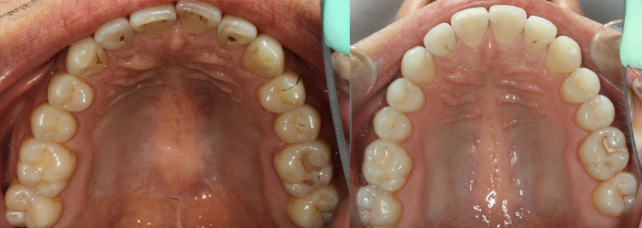
 Invisalign Food Restrictions
Invisalign Food Restrictions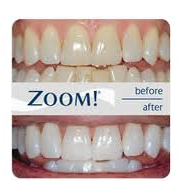 For every great, reliable method for tooth care, there are dozens of imitators and "fast-acting" methods that try to cash in on new trends. The process of
For every great, reliable method for tooth care, there are dozens of imitators and "fast-acting" methods that try to cash in on new trends. The process of  Teeth need a great deal of calcium to stay strong, there's almost no better food to get it than through dairy products. Milk and cheese especially are great for your teeth and jawbone. Calcium prevents tooth decay by protecting your teeth from periodontal disease, a form of gum disease, as well as maintaining healthy bone structure of the teeth and jaw. About one-third of your body's bones and teeth are made of calcium, so it's important to have a great deal of it in your system. Yogurt, tofu, and soy milk are also good sources of calcium.
Teeth need a great deal of calcium to stay strong, there's almost no better food to get it than through dairy products. Milk and cheese especially are great for your teeth and jawbone. Calcium prevents tooth decay by protecting your teeth from periodontal disease, a form of gum disease, as well as maintaining healthy bone structure of the teeth and jaw. About one-third of your body's bones and teeth are made of calcium, so it's important to have a great deal of it in your system. Yogurt, tofu, and soy milk are also good sources of calcium. Another great food that’s rich in both calcium and Vitamin D is salmon. Without Vitamin D, your body cannot absorb and utilize the calcium that you've just consumed from your dairy products. Consuming food rich in Vitamin D is essential to healthy teeth. What better food to eat than salmon for your Vitamin D as it's also rich in Omega-3 fatty acids which help cognitive function, eye, cardiovascular, skin, and hair health.
Another great food that’s rich in both calcium and Vitamin D is salmon. Without Vitamin D, your body cannot absorb and utilize the calcium that you've just consumed from your dairy products. Consuming food rich in Vitamin D is essential to healthy teeth. What better food to eat than salmon for your Vitamin D as it's also rich in Omega-3 fatty acids which help cognitive function, eye, cardiovascular, skin, and hair health. Though mostly all vegetables are great for your teeth, there are many benefits to crunchier vegetables like cauliflower, broccoli, and cucumber. Crunchy vegetables contain many vitamins, minerals, and antioxidants that are all good for your health. Specifically to teeth, they contain Vitamin C, which helps prevent plaque and bacteria. As well, crunchy vegetables contain phosphorus, which is another major player in absorbing calcium. Last, crunchy vegetables promote and stimulate your salivary production. This is the body's natural way of washing debris and food from your teeth and gums while providing disease-fighting enzymes throughout your mouth to prevent infection.
Though mostly all vegetables are great for your teeth, there are many benefits to crunchier vegetables like cauliflower, broccoli, and cucumber. Crunchy vegetables contain many vitamins, minerals, and antioxidants that are all good for your health. Specifically to teeth, they contain Vitamin C, which helps prevent plaque and bacteria. As well, crunchy vegetables contain phosphorus, which is another major player in absorbing calcium. Last, crunchy vegetables promote and stimulate your salivary production. This is the body's natural way of washing debris and food from your teeth and gums while providing disease-fighting enzymes throughout your mouth to prevent infection. While crunchy vegetables are a good source of Vitamin C, oranges and other citrus fruits are your ultimate source. Vitamin C is extremely important to the teeth because of its ability to strengthen blood vessels and connective tissues. This is vital to keeping your teeth connected to your jaw. As well, vitamin C is an anti-inflammatory, which can help reduce and/or slow the progression of gingivitis.
While crunchy vegetables are a good source of Vitamin C, oranges and other citrus fruits are your ultimate source. Vitamin C is extremely important to the teeth because of its ability to strengthen blood vessels and connective tissues. This is vital to keeping your teeth connected to your jaw. As well, vitamin C is an anti-inflammatory, which can help reduce and/or slow the progression of gingivitis. Last, onions are a great source for anti-bacterial sulphur compounds, which play a major role in killing a lot of the bacteria that breed on your teeth and gums. If you don't mind just a little stinky breath for a minute, it's best to eat the onions raw. This will help you get the best from the vegetable to help prevent a fair amount of tooth decay.
Last, onions are a great source for anti-bacterial sulphur compounds, which play a major role in killing a lot of the bacteria that breed on your teeth and gums. If you don't mind just a little stinky breath for a minute, it's best to eat the onions raw. This will help you get the best from the vegetable to help prevent a fair amount of tooth decay.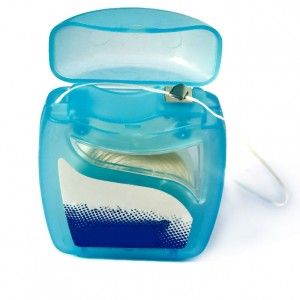 Flossing is an important part of dental hygiene. One should consider it just as beneficial as brushing their teeth in the fight to prevent plaque, cavities, and gingivitis. However, from last week's post:
Flossing is an important part of dental hygiene. One should consider it just as beneficial as brushing their teeth in the fight to prevent plaque, cavities, and gingivitis. However, from last week's post: 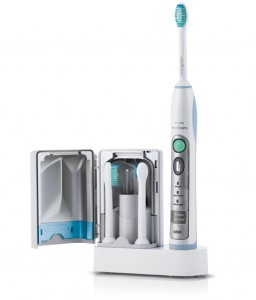 It may seem elementary to you, but believe it or not, many people still don't brush their teeth correctly. Either they don't do it for long enough time, concentrate on the wrong areas, brush too hard, or just completely misuse the toothbrush. For our Water Tower Dental Care patients, and anyone else that has discovered our blog, we would like to provide you with the steps to properly brushing your teeth.
It may seem elementary to you, but believe it or not, many people still don't brush their teeth correctly. Either they don't do it for long enough time, concentrate on the wrong areas, brush too hard, or just completely misuse the toothbrush. For our Water Tower Dental Care patients, and anyone else that has discovered our blog, we would like to provide you with the steps to properly brushing your teeth. Wet the toothbrush and apply a thin strip of toothpaste. Although there is a plethora of toothbrushes to choose from, we don't recommend a specific design of brush, rather it's more important to find a brush that if manual is soft and if electric, ultrasonic. Richard H. Price, DMD and consumer advisor for the
Wet the toothbrush and apply a thin strip of toothpaste. Although there is a plethora of toothbrushes to choose from, we don't recommend a specific design of brush, rather it's more important to find a brush that if manual is soft and if electric, ultrasonic. Richard H. Price, DMD and consumer advisor for the  When using a manual soft toothbrush, start by brushing the outer surface of your upper teeth, then your lower. Keep the bristles at a 45-degree angle from your teeth and sweep or roll away from the gum line. Your gums are very sensitive and must be treated with care when brushing. Never brush up, into the gums, always away. When using an electric ultrasonic toothbrush, hold bristles at a 45-degree angle at gum line and slowly move brush across teeth.
When using a manual soft toothbrush, start by brushing the outer surface of your upper teeth, then your lower. Keep the bristles at a 45-degree angle from your teeth and sweep or roll away from the gum line. Your gums are very sensitive and must be treated with care when brushing. Never brush up, into the gums, always away. When using an electric ultrasonic toothbrush, hold bristles at a 45-degree angle at gum line and slowly move brush across teeth. After the outer surface, focus on the inner surface of the teeth, first the upper then lower teeth. Again, brush away from the gums at a 45-degree angle.
After the outer surface, focus on the inner surface of the teeth, first the upper then lower teeth. Again, brush away from the gums at a 45-degree angle. Clean the chewing surfaces of the teeth. You can be slightly more aggressive with the surface of the teeth, but nothing too hard. Pay extra attention to the hard-to-reach back teeth and areas around fillings or crowns.
Clean the chewing surfaces of the teeth. You can be slightly more aggressive with the surface of the teeth, but nothing too hard. Pay extra attention to the hard-to-reach back teeth and areas around fillings or crowns. Once you've finished on the teeth, give your tongue a gentle brush to remove any bacteria and to keep your breath fresh longer. We highly recommend using a tongue scraper as well.
Once you've finished on the teeth, give your tongue a gentle brush to remove any bacteria and to keep your breath fresh longer. We highly recommend using a tongue scraper as well.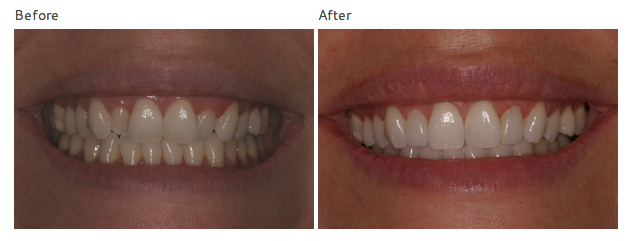





 Website Powered by Sesame 24-7™
Website Powered by Sesame 24-7™